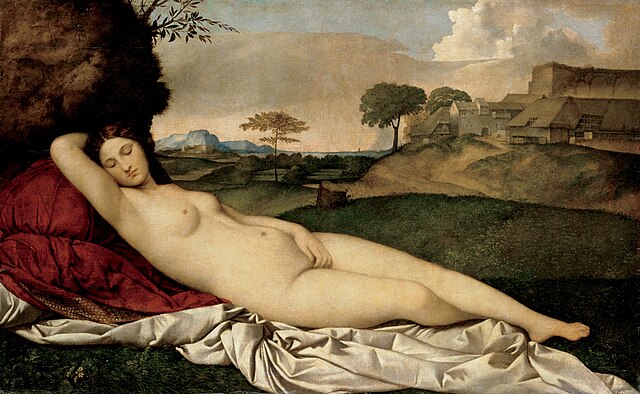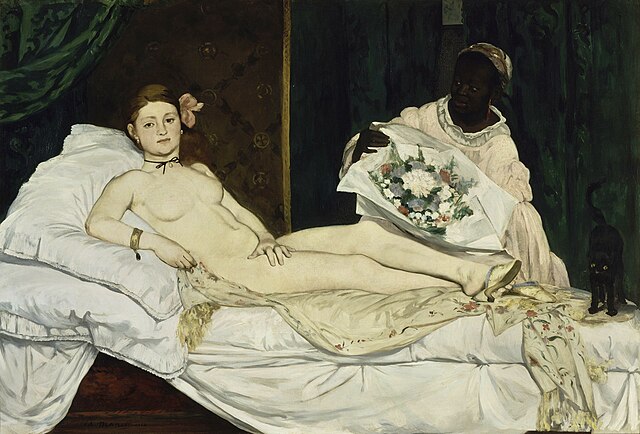One of my favourite love poems is one by
John Donne, titled “The Flea.” In this intriguingly lusty poem a flea engineers
a consummation between a clandestine couple by mingling their blood it sucks in
its own body. Whenever viewing erotic paintings, Donne’s poem springs to my
mind. I feel like that sneaky flea, serving as an intermediary between the
fateful lovers, and being complicit in the sexual affair whilst not actively
engaging in it. Then I check the distance between the painting and me, the
discreet distance that prevents any hypnotized ones from absorbing too further
and caressing the painting without noticing.
I will be more prudent on my definition on
eroticism and discuss only female nudity in art. Reclining nudes in painting
fascinate me, and for a long time I have wanted to write on a piece that delves
into a panoply of naked beauties. My personal favourite has always been
Giorgione’s Sleeping Venus (1510). It
is the image that most reminiscent of a relaxing holiday in a far-flung land. The
goddess lolls on a red mattress, which, against a landscape with sombre
colours, is made a distinct feature of the painting. A silver sheet pours
flowingly from out beneath the mattress and sends crinkles and ripples that
underlie the circumference of Venus’ voluptuous body. For the sake of
discretion the private part is covered by the goddess’ hand, which clutches
rather than laying gently above. For me that particular hand gesture is what stirs
up all sexual wonders- the slight curl of her fingers deliberately puts her
body part into focus. It seems as if the goddess is grabbing at something she
dearly protects and cherishes.
If Giorgione’s Venus poises between modesty
and eroticism, then a more sensuous and bold Venus is introduced in Titian’s. In
Venus of Urbino (1538) the goddess is
almost rendered as a temptress, who lies amid a Renaissance surrounding
sumptuously embellished with rich decorations. Titian had his Venus’ eyes
opened, exuding both wide-eyed naiveté and dangerous seduction. With those eyes
the goddess confronts the viewers unfalteringly, as if inviting anyone who is
willing to enter her world. A puppy (a symbol for fidelity) is sleeping
unperturbedly; implying that the last vestige of virtue is at risk of fading
away. A girl at the back is up to ears in rummaging about a treasure trove, but
her mother’s secrets she can never dredge up.
And the tension of sexuality just gets more
and more layered and compounded. In 1863 saw the display of Edouard Manet’s Olympia. In comparison with Giorgione’s
and Titian’s Venus, Manet’s goddess is far from ideally beautiful. In fact her
body is awkwardly disproportionate. Yet Olympia seems by no means abashed by
her flaws. Despite how the painting appears rather cursorily done, the confrontational
stare is still there. This time, the gaze looks enigmatic. Neither grabbing nor
clutching, the hand places on the private part palm-down, but with no
distinguished ladylike grace whatsoever. Her maid brings to her a bouquet of
fresh flowers, a gift presumably from her former client. Yet the flowers do
little to catch her attention. Instead her eyes are steadfastly on us; we, her
next prey she is ready to pounce upon. A black cat exerts itself on the edge of
the bed; she symbolizes a prostitute.
This is how human flesh is celebrated in
art: nothing is concealed, nothing is kept secretive; everything is exposed
before your goggle eyes. With the prevalence of nudity in art, viewers scarcely
blush when beholding such paintings in galleries, but once the eroticism is
powerful enough, our every sense still pricks up.



Comments
Post a Comment